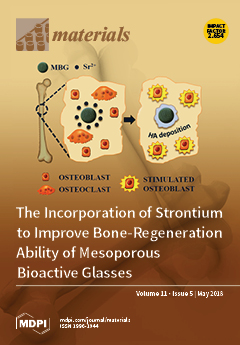In order to predict flow behavior and find the optimum hot working processing parameters for 5754 aluminum alloy, the experimental flow stress data obtained from the isothermal hot compression tests on a Gleeble-3500 thermo-simulation apparatus, with different strain rates (0.1–10 s
–1)
[...] Read more.
In order to predict flow behavior and find the optimum hot working processing parameters for 5754 aluminum alloy, the experimental flow stress data obtained from the isothermal hot compression tests on a Gleeble-3500 thermo-simulation apparatus, with different strain rates (0.1–10 s
–1) and temperatures (300–500 °C), were used to construct the constitutive models of the strain-compensation Arrhenius (SA) and back propagation (BP) artificial neural network (ANN). In addition, an optimized BP–ANN model based on the genetic algorithm (GA) was established. Furthermore, the predictability of the three models was evaluated by the statistical indicators, including the correlation coefficient (
R) and average absolute relative error (
AARE). The results showed that the R of the SA model, BP–ANN model, and ANN–GA model were 0.9918, 0.9929, and 0.9999, respectively, while the
AARE of these models was found to be 3.2499–5.6774%, 0.0567–5.4436% and 0.0232–1.0485%, respectively. The prediction error of the SA model was high at 400 °C. It was more accurate to use the BP–ANN model to determine the flow behavior compared to the SA model. However, the BP–ANN model had more instability at 300 °C and a true strain in the range of 0.4–0.6. When compared with the SA model and BP–ANN model, the ANN–GA model had a more efficient and more accurate prediction ability during the whole deformation process. Furthermore, the dynamic softening characteristic was analyzed by the flow curves. All curves showed that 5754 aluminum alloy showed the typical rheological characteristics. The flow stress rose rapidly with increasing strain until it reached a peak. After this, the flow stress remained constant, which demonstrates a steady flow softening phenomenon. Besides, the flow stress and the required variables to reach the steady state deformation increased with increasing strain rate and decreasing temperature.
Full article






